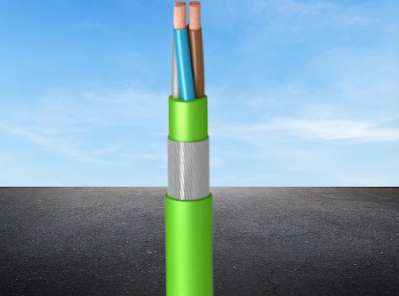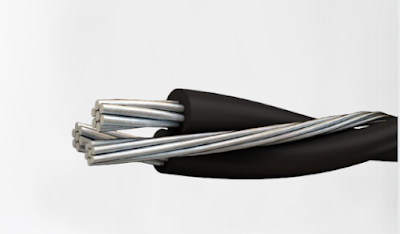What are the Parts of an Electrical Cable?
 |
| Parts of an Electrical Cable |
In the realm of electrical engineering and construction, understanding the intricacies of electrical cables is paramount. Whether you're an industry professional or a curious homeowner, knowing the parts and types of electrical cables can help you make informed decisions about installations, repairs, and upgrades. In this comprehensive guide, we'll delve into the anatomy of electrical cables, explore their various components, and discuss different types available in the market.
Introduction to Electrical Cables
Electrical cables are essential components in any electrical system, serving as conduits for transmitting electricity from one point to another. They come in various sizes, configurations, and designs to suit different applications, ranging from household wiring to industrial power distribution.Parts of an Electrical Cable
- Conductor: At the core of every electrical cable lies the conductor, which is responsible for carrying electrical current from the power source to the connected devices. Conductors are typically made of copper or aluminum due to their excellent conductivity properties. Copper conductors are preferred for their superior conductivity and durability, making them ideal for high-performance applications.
- Insulation: Surrounding the conductor is the insulation layer, which serves to protect the conductor from external elements and prevent electrical leakage. Insulation materials can vary depending on the cable's intended use and environmental factors. Common insulation materials include PVC (Polyvinyl Chloride), XLPE (Cross-linked Polyethylene), and EPR (Ethylene Propylene Rubber).
- Shielding (if applicable): In certain applications where electromagnetic interference (EMI) or radio frequency interference (RFI) is a concern, electrical cables may feature a shielding layer. Shielding helps to mitigate interference and maintain signal integrity, particularly in sensitive electronic systems. Common shielding materials include aluminum foil, copper tape, or conductive polymers.
- Armor (if applicable): For added mechanical protection, some electrical cables are equipped with an armored layer. Armoring can be metallic or non-metallic and provides resistance against physical damage, abrasion, and rodent attacks. Armored cables are commonly used in outdoor installations, underground wiring, and industrial environments where durability is paramount.
- Jacket: The outermost layer of an electrical cable is the jacket, which encapsulates and protects all the internal components. Jackets are typically made of PVC, PE (Polyethylene), or LSZH (Low Smoke Zero Halogen) materials. The choice of jacket material depends on factors such as flame resistance, UV resistance, and environmental compliance.
Types of Electrical Cables
- Power Cables: Power cables are designed to transmit electrical power from a power source to electrical devices or distribution points. They come in various configurations, including single-core, multi-core, armored, and unarmored. Znergy Cable, a leading electrical cable manufacturer in Australia, specializes in producing high-quality power cables for diverse applications, including industrial, commercial, and residential sectors.
- Armoured cable: Armoured cable, as the name suggests, feature a protective armor layer for enhanced mechanical strength and durability. These cables are commonly used in outdoor installations, underground wiring, and areas prone to physical damage. Znergy Cable offers a wide range of armoured cable suitable for harsh environments and demanding applications.
HV Cables: High Voltage (HV) cables are designed to transmit electricity at high voltage levels, typically above 1000 volts. These cables are used in power transmission and distribution networks, substations, and industrial facilities. Znergy Cable manufactures HV cable with advanced insulation and shielding technologies to ensure safe and reliable operation in high voltage environments.
Conclusion
Understanding the parts and types of electrical cables is essential for anyone involved in electrical installations, maintenance, or repairs. From the conductor to the jacket, each component plays a crucial role in ensuring the performance, safety, and reliability of electrical systems. Whether you're in need of power cables, armored cables, or HV cables, choosing a reputable manufacturer like Znergy Cable can ensure superior quality and peace of mind.In conclusion, next time you encounter electrical cables in your projects or daily life, remember the intricate components and diverse types that make them indispensable assets in modern electrical systems.



Comments
Post a Comment